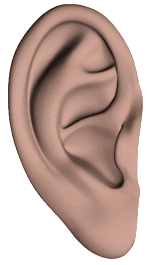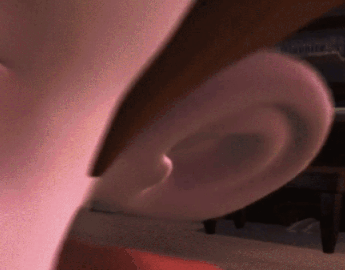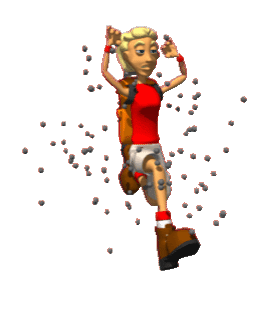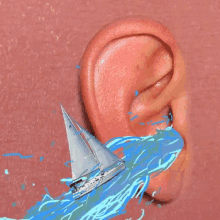What is the Outer Ear?

The outer ear contains the most visible and familiar parts of the ear, the pinna and the ear canal. The pinna are the most visible part of the ear and stick out from the sides of the head. The bowl-like portion that leads to the entrance of the ear canal is called the concha.
The Ear Canal:

The ear canal is a narrow S-shaped opening that directs all of the day-to-day sound waves we come across towards the eardrum. The entrance of the canal is the external auditory meatus. Humes & Bess (2014) claim that the ear canal on average is about 2.5cm long and 5-7mm narrow to make the inner ear inaccessible to foreign intruders.
 It is made up of skin and cartilage, lined with tiny hairs and ceruminous glands that secrete cerumen. The hairs and cerumen protect the inner ear further protect the inner ear from intruders such as insects and debris.
It is made up of skin and cartilage, lined with tiny hairs and ceruminous glands that secrete cerumen. The hairs and cerumen protect the inner ear further protect the inner ear from intruders such as insects and debris.
Pathology:
Otitis externa is when a bacteria or fungus infects an inflamed ear canal. The infection can occur when water gets trapped into the ear canal and creates a suitable environment for fungus or bacteria to grow. Otitis externa can be diagnosed based on symptoms including pain, itching inside the ear, pus oozing from the ear, redness, swelling of the outer ear, and a mild fever. When the infection is less severe, the symptoms include swelling in the ear canal and mild discomfort. If it progresses to be moderate, the ear canal may become partially occluded.
 Moreover, it can eventually become a pretty severe disease in rare cases. The ear canal becomes noticeably impeded in such instances, and the pain can be rather intense. The infection usually heals on its own in a couple of days. But if it doesn’t, a doctor may administer pain relievers and antibiotics. The majority of patients see improvement within 48-72 hours of treatment. If they don’t, a reevaluation of treatment may be necessary by a medical professional (Medina-Blasini & Sharman, 2020).
Moreover, it can eventually become a pretty severe disease in rare cases. The ear canal becomes noticeably impeded in such instances, and the pain can be rather intense. The infection usually heals on its own in a couple of days. But if it doesn’t, a doctor may administer pain relievers and antibiotics. The majority of patients see improvement within 48-72 hours of treatment. If they don’t, a reevaluation of treatment may be necessary by a medical professional (Medina-Blasini & Sharman, 2020).